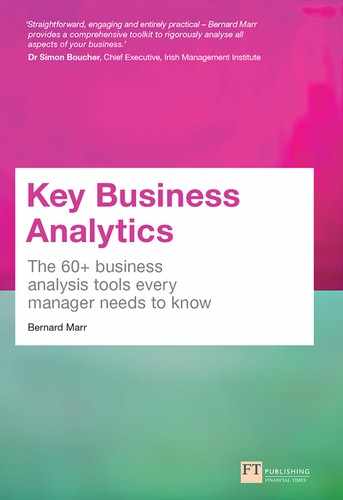56
Competency acquisition analytics
What is it?
Competency acquisition analytics is the process of assessing how well or otherwise your business acquires talent. Talent recruitment and management is often critically important for the growth of most businesses.
That said, the competition for talent is fierce and talented people can be very expensive to recruit and keep. Competency acquisition analytics can help to identify how successful your talent strategy is.
Why does it matter?
Competency acquisition analytics matters because talent matters. Ever since McKinsey & Co told the business community there was a ‘War for Talent’, business has been obsessed with talent. How to identify it, where to find it and how to keep it once you’ve recruited it!
And while there is little doubt that high-performing individuals are needed for growth, it is important to assess talent logically and not get too carried away with recruiting certain individuals at all cost. Talent can be hard work: individuals who are full of their own importance can, unless managed, end up being more trouble than they are worth. They can also alienate other members of the team. Getting the acquisition right matters because when done properly with the help of competency analytics you can avoid many of the downsides while accessing the upside.
When do I use it?
Competency acquisition analytics should be something you assess at least every year to see how well your business is doing at a) identifying the competencies you need and want, and b) finding those competencies cost-effectively.
It can be relatively easy to identify key players in any industry and if your business has deep pockets then those individuals can often be attracted to your business, but few businesses have deep enough pockets that will allow the money to talk when recruiting talent. Besides, individuals who only take a role because of the money will probably not stay that long or fully engage in the vision of the business. Finding ways to identify talent before it is fully fledged talent is the key, and this type of analytics allows you to do that.
It is therefore important to know how well your business is performing in the task of identifying talent early and stepping in to secure it at a reasonable price.
What business questions is it helping me to answer?
Competency acquisition analytics helps you answer business questions such as:
- Are we aware of the competencies we need? If so, what are they?
- What are the key gaps in competencies we require?
- How effective are we at attracting individuals with the right competencies to our business?
How do I use it?
A good starting point is the identification of the competencies your business requires now and in the future. You don’t want to look at every little competence, just the key ones that will help you stay competitive. This can be achieved using a number of tools and techniques such as focus groups (Chapter 21), interviews (Chapter 22) and surveys (Chapters 19 and 20). It is usually relatively easy to identify the key competencies required. For more complex organisations it might make sense to apply tools such as data mining (Chapter 6) or text analytics (Chapter 8) to identify key competencies.
The next step is then to assess the current levels of these competencies within your business and the gap between what you would like to have in terms of competencies and what you actually have at present. Again, you can use similar techniques to the one listed above to perform this.
It is then a good idea to create regular assessments and updates to that model so that you can track progress over time. For example, you would want some information on whether you are able to close the competency gaps in your business and which competencies you find most difficult to acquire.
Once you have identified the key competencies required, you can monitor how effective you are at spotting and recruiting candidates with those competencies.
Practical example
As with many sports, new baseball talent was ‘spotted’ by experts and talent scouts who would travel the country watching baseball games in the hope they would be able to identify an upcoming star. The process was very subjective. For the most part it was down to experience and luck.
Baseball advisor Bill James changed all that. He developed a scientific evidence-based approach to ‘spotting’ new baseball talent that broke a player’s behaviour and actions down into multiple measurable elements.
Billy Beane, the general manager of the Oakland Athletics (or the Oakland A’s) heard about James’s theory and decided to work with him to acquire competency or talent. Despite having the third-lowest payroll in the league, James’s hypothesis worked – the Oakland A’s bought undervalued talent, which in turn took the club to the playoffs in 2002 and 2003. Prior to this evidence-data-driven approach they were simply not able to successfully compete with deep-pocketed baseball clubs like the New York Yankees. Competency acquisition analytics changed all that and changed their fortune.
Tips and traps
Competency acquisition analytics is only going to be successful if you are able to effectively identify and track competencies in your organisation. Many companies don’t concentrate on the vital (or difficult to get) competencies and instead produce generic competency frameworks that make the process of tracking and assessing competencies very complex and cumbersome. Key to effective competency acquisition analytics is focusing on a small set of key competencies.
Further reading and references
For more on competency acquisition analytics see for example:
- Dubois, D.D. and Rothwell, W.J. (2010) Competency-Based Human Resource Management: Discover a New System for Unleashing the Productive Power of Exemplary Performers, Boston, MA: Nicholas Brealey North America
- http://www.recruitingtrends.com/thought-leadership/62-how-big-data-can-turn-talent-acquisition-pros-into-superstars
